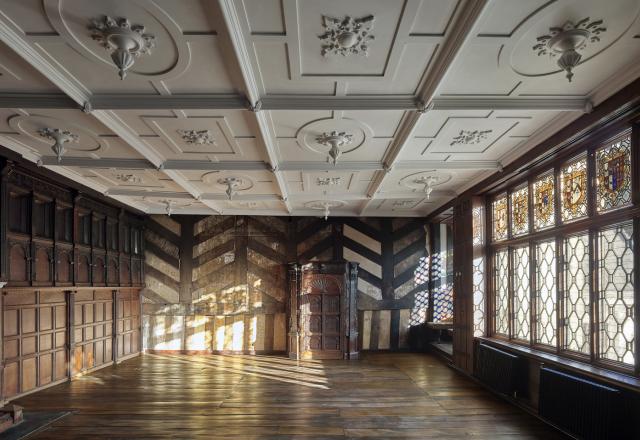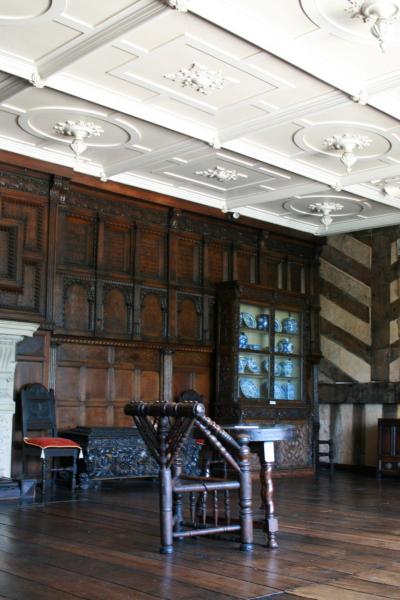
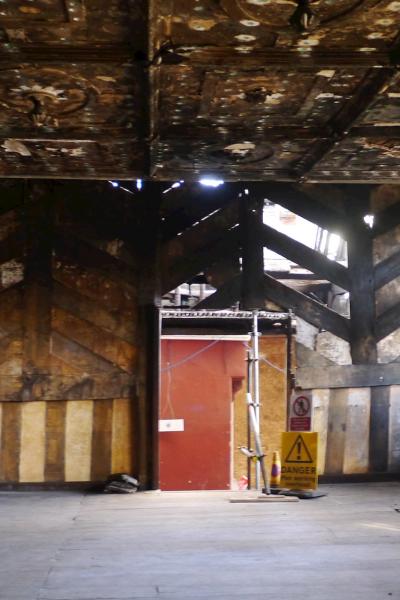
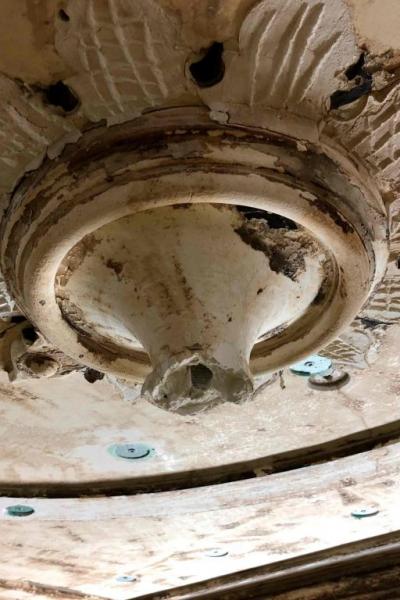
In the early hours of 15th March 2016, Greater Manchester Fire Service was called to Wythenshawe Hall, a Tudor manor house set within 250 acres of parkland south of the city.
The Grade II* listed timber-framed building, that had once been the home of the prominent Tatton family for more than 600 years, had fallen victim to an arson attack, which had torn through the building’s medieval core, causing significant damage to the main hall, the roof and bell tower.
One of the rooms caught at the centre of the blaze was the hall’s most significant principal space, the Withdrawing Room.
Located within the 16th century building’s two storey, timber-framed core, the Withdrawing Room would have been one of the most important rooms in the house during the Tatton’s residence – a place where the family would have received and entertained guests.
Although the room had witnessed several refurbishments throughout the years, the essence of its original 1530s century design remained. This included one of the hall’s defining features, an ornate plasterwork ceiling.
Created in the 19th century to a 16th century design, the ceiling featured flat beds decorated with broad square edge planter mouldings, incorporating both fleur-de-lea motifs and projecting pendants of plaster.
During the fire, however, the ceiling was extensively damaged resulting, in some areas, in the complete loss of decorative details. The paint had also lost adhesion to the plaster across most of the ceiling, even where lower levels of fire damage had occurred.
As part of the initial period of stabilisation, a remedial solution was developed to help strengthen the ceiling’s surviving features. The solution involving using small steel disk plate screw heads to fix salvageable lath and plaster to surviving, structurally sound beams in the floor above, preventing the collapse and loss of the original detail. This allowed the original ceiling to remain in situ, while disguising the intervention.

The next stage of the restoration involved extensive paint analysis, undertaken by Messenger Construction Group. The aim of this investigative work was to better understand the various decorative changes over the years, and the types of paint used, to help inform repainting options.
The analysis revealed that the ceiling had seen nine decorative themes since the 19th century. The first of which was a brown glaze applied to the dividing bays to give the impression of wood. Several subsequent decorative schemes, however, saw the ceiling painted in an off-white colour. Given that the ceiling for most of the hall’s existence was painted in this shade, even during the Tatton’s residence, this colour has been reinstated as part of the restoration.
The investigations into the paint also revealed that early decorative schemes had been developed using harmful lead-based paints. To establish how these contaminated layers of paint could be safely removed, while minimising the impact on the surviving historic plasterwork, various methods were tested and explored over several months. Ultimately, PeelAway, a low odour, water-based paint stripper was chosen as the most suitable method of removal.
The solution works by applying a paste, which turns lead into lead hydroxide, onto the affected surface. The area is then covered with a poultice blanket so, when the stripping is complete, the blanket, paste and paint can be removed along with a cover retaining paint which traps toxic particles, preventing them from becoming airborne.
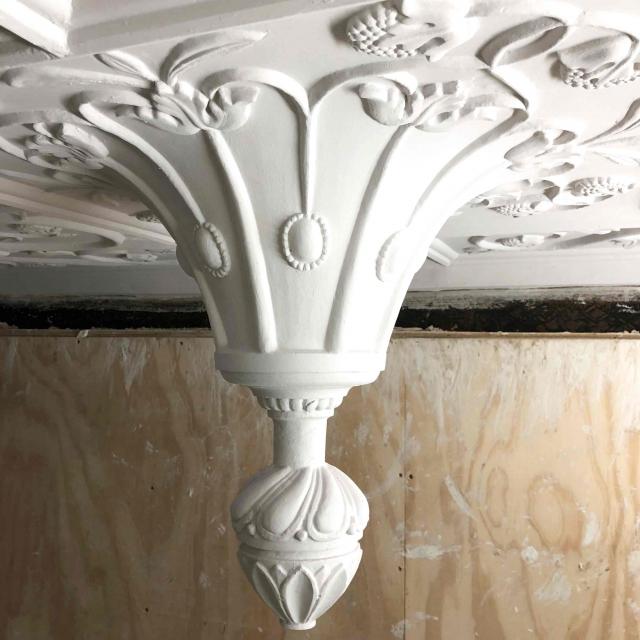
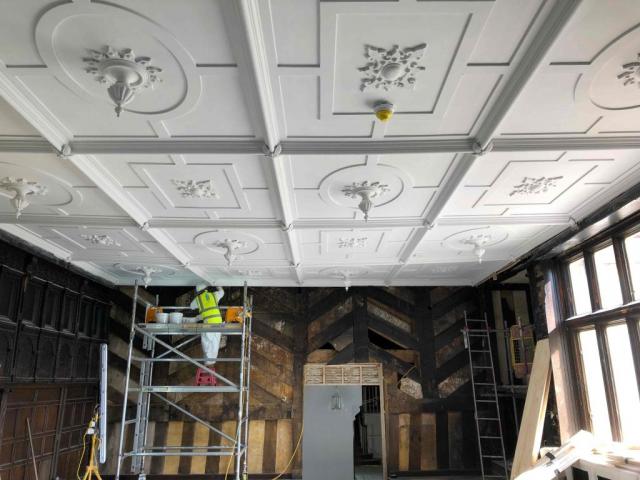
Over two months, the poultices were carefully applied, and the paint was painstakingly removed using small scrapers and scalpels. Following the careful removal of all existing decorative schemes, the areas of damaged and lost plasterwork were painstakingly reinstated using traditional material and techniques. The reinstatement of lost or damaged features was informed by historic drawings, photographs and mouldings taken of existing features.
The work was carried out by Valerio Caputi, a conservator at building restoration and conservation, Stone Edge, whose experience includes conservation projects at The Vatican.
The analysis of the ceiling has not only helped the team determine the approach to repair, but it has also offered greater insight into the history of the Hall. During the plaster analysis, fragments of newspaper referring to an event in 1841 were found. Before this, the ceiling’s origin had been based on an estimate, but now the team can more accurately pinpoint the date of construction. Prior to the fire, Buttress had developed a Conservation Management Plan (CMP) for the building. This piece of information will allow the CMP to be updated and will inform future maintenance of the ceiling.
After more than two years of meticulous research, analysis and craftmanship, the Withdrawing Room’s ceiling has been reinstated true to the original. Its restoration has not only secured the historic fabric of the building, but it has also safeguarded this significant historic feature for the enjoyment of future generations.
